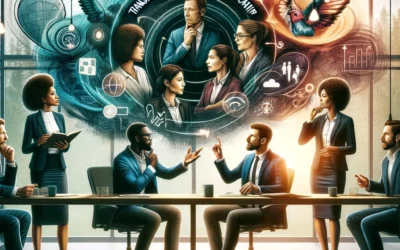 In Driven, two eminent Harvard professors, Paul R. Lawrence and Nitin Nohria, identify four core human drives:
In Driven, two eminent Harvard professors, Paul R. Lawrence and Nitin Nohria, identify four core human drives:
- The drive to acquire stems from the basic human instinct to survive. It can be seen in our efforts to gather food, status, and power.
- The drive to bond is based on our need to connect with others for reproduction, social interaction, sharing/trading, and protection from predators.
- The drive to learn allows us to accumulate and transmit knowledge from generation to generation. This is where we develop our beliefs about how the world works or ought to work-ideologies, in other words (something that distinguishes humans from animals).
- The fourth drive, to defend, protects us from environmental risks by encouraging us toward fight or flight. In many ways, it takes into account all the other drives since we are called to defend not only our bodies, but our possessions, power, relationships, knowledge, and ideologies.
While these four drives often work synergisticly, one or more can dominate. And, as with values, our drives can come into conflict. If there is limited food after a shipwreck, for instance, would your drive to bond with survivors impel you to share the food, or would your drive to acquire and survive supersede it?
Naturally, our drives are connected to our beliefs, emotions, and physical responses: the ways, in other words, that we experience and process the world. In the heat of battle, for example, the drive to defend kicks in. Because our lives are in danger, we react physiologically and emotionally. Our belief system works at a much slower pace, but it, too, is present. During less stressful times, our beliefs help construct pathways for our emotions and physical responses. As a result, the actions we take are a product of all three: beliefs, emotions, and physical responses. When the battle is over, we may modify our beliefs slightly to incorporate our new experiences. If one or more of your drives dominates, chances are that your beliefs, emotions, and physical responses are unbalanced, too.
Work on balancing all four drives. To be balanced doesn’t mean that each drive has an equal and corresponding number of experiences. These drives have an innate desire to be met, however. If you’re ignoring one, it bears some investigation and, perhaps, a realignment of your priorities. In the process, you will need to reassess your beliefs, emotions, and physical responses. If you decide you need to bond more, for instance, you might need to alter the way you physically respond to others. In general, give more time and consideration to what drives you and how you experience and process the world. The more you’re aware of your tendencies, the more likely you are to avoid unnecessary conflict and engage in rich, meaningful interactions. Encourage this sort of reflective activity from your coworkers, too. Otherwise the adjustment will mostly have to come from you!



